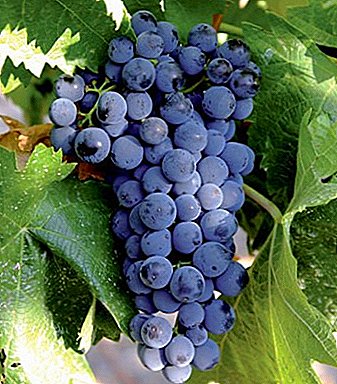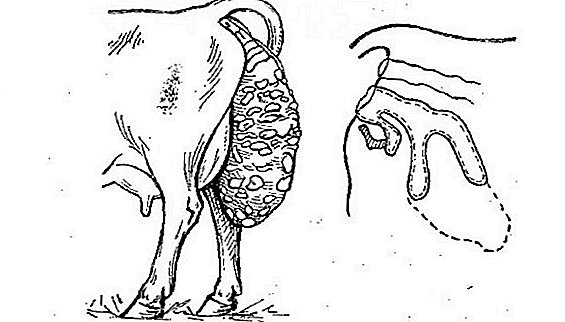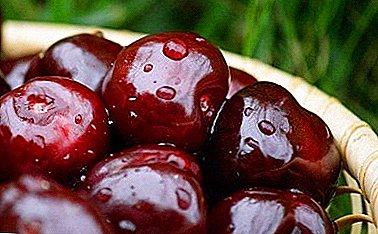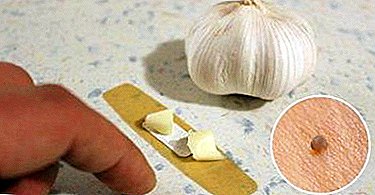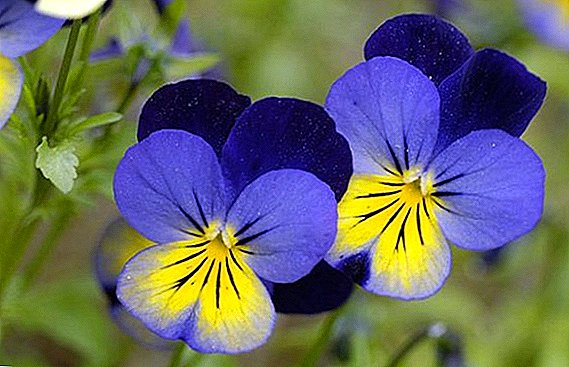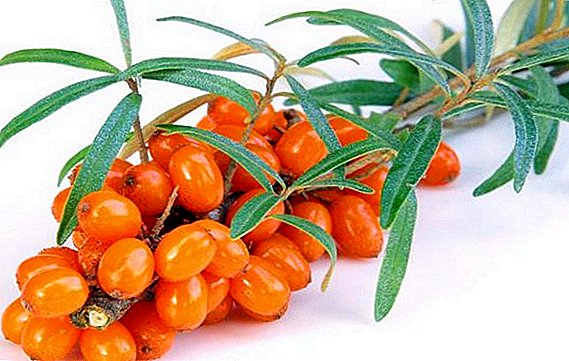 A variety of trees, shrubs and plants grow in the garden of every self-respecting gardener, but far from every yard you can find such a seemingly unremarkable tree like sea buckthorn. What features of sea buckthorn, rules of planting, growing and care, what kind of crop we can gather and what to prepare from it - about all this in this article.
A variety of trees, shrubs and plants grow in the garden of every self-respecting gardener, but far from every yard you can find such a seemingly unremarkable tree like sea buckthorn. What features of sea buckthorn, rules of planting, growing and care, what kind of crop we can gather and what to prepare from it - about all this in this article.
Sea buckthorn: botanical description
Sea buckthorn (Latin Hippóphaë) is a thorny tree or shrub from 1 to 3 meters high, belongs to the Lokhovae family (Elaeagnaceae). The leaves are greenish, long and narrow, in a white speck.
Not very noticeable sea buckthorn during flowering, as it blooms quite inconspicuously, and the flowers are small and appear before the leaves begin to bloom. Rounded or elongated fruits, from yellow to bright orange and even red color, adorn the branches in thick clusters (hence the name of the tree). Fruits ripen in late summer and mid-autumn and do not crumble when ripe, and may hang on the branches throughout the winter.
The plant originally spread over the territory of Central and Northern Asia, and today it can be found all over the world.
Prefers sandy and pebble soils, often found on the banks of reservoirs, rivers and streams.
Important! Sea buckthorn has a male (2) and female (1) tree. It is important to distinguish them, as the fruit is only female. This is best seen in the spring during swelling of the kidneys. Male kidneys are 2 times more female, they are covered 5-7 scales while there are only two women’s. But the tree will not bear fruit unless you plant a male bush next to it for pollination.

Features of planting sea buckthorn
The most important stage of cultivation is the correct and competent approach to planting a tree. Let's see how to plant a plant so that it not only begins, but also begins to develop and bear fruit.
What kind of lighting does sea buckthorn love?
Sea buckthorn is a light-loving and moisture-loving tree. It is planted on sunny, not shaded by other plants areas and especially requires care in the first years of growth.
If you plant a small tree and allow strong overgrowing by weeds, then already the first year in the garden will be a test for the tree, and it can easily die from a lack of light. 
Selection of soil for planting
Moisture in the soil is especially necessary in the beginning of the life of the tree. Sandy loam or loam will be ideal, as they retain moisture for quite a long time, preventing rapid evaporation from the soil. At the same time, we choose an overestimated place, since sea buckthorn does not tolerate stagnant groundwater.
Competent planting of sea buckthorn seedlings
Proper planting of seedlings is a guarantee of good tree development and a bountiful harvest in the future.
You will certainly be interested to read about the proper planting and care for cherry plum, plum, walnut, cherry, apricot, apple.
Planting dates: when planting sea buckthorn, in spring or autumn
The best option is to plant in the spring, before the buds swell or, as a last resort, before flowering, because when the sea buckthorn is planted in the fall, the percentage of plant survival is too weak. And if we plant in the fall, then until the beginning of October, when there are still enough warm days to strengthen the seedling.
Selection and preparation of seedlings for planting
Two-year-old seedlings take root best, but if you carefully take care of an annual plant, you can also grow a strong tree with high yields. A good seedling in height of 35-50 cm, with a diameter of 0.6-0.8 cm, has at least 3 main root processes and a lot of fibrous. The seed bark should look resilient, without brown spots and darkening, which means that the plant is freezing in winter, and it is unsuitable for planting.
Did you know? A male plant can pollinate at a distance of up to 15 meters, and if this is already growing in the neighboring plot, then you can safely plant only the female, saving space in the garden.
Digging the hole
Holes for planting are digging with a size of 0.6 x 0.6 x 0.6 m. A drainage thickness of 10-12 cm falls asleep at the bottom. A hillock must be built in the hole and the seedling should be placed vertically, carefully straightening the roots. Gently pour a mixture of organic fertilizer, sand and soil in equal proportions with the root of the neck to the ground 3-5 cm. As soon as we planted the sea buckthorn, we make a hole around, pouring 2 buckets of water all at once, and mulch it.
Landing pattern
Do not forget that we need to plant male and female trees. Developed sea buckthorn crown gives us to understand that the distance between the trees should be at least 2.5 m. There are two methods for planting sea buckthorn:
- male plant in the center, and female around;
- male planting on the leeward side, followed by several female ones.

Rules for the care of sea buckthorn in the garden
So, the tree is already well established in our garden, now it is important not to abandon it, but to take care and care in a timely manner.
When to water a plant
As a moisture-loving plant, sea buckthorn likes regular watering. During any growing season, especially in the first year after planting, regularly pour 3 buckets of water into the hole, and during fruiting 5-6 buckets are also possible.
Important! Too moist soil and stagnant water can damage the roots of the plant and block the access of air. In watering, observe the measure.
Soil care
The soil is regularly loosened, but it is important not to forget that the roots are high, loosening should be carried out no deeper than 7 cm, and digging is generally undesirable.
Plant nutrition
Along with this, every year the tree requires bait. In the first year, you can not fertilize, and in the future every spring they bring in organic matter (compost or humus at the rate of 1 bucket per 1 sq. M of near-barrel area). Nitrogen supplements are also excellent for 1 bucket of water - up to 30 g, which has a positive effect on tree growth and yield.
How to trim sea buckthorn
If a young plant in the first years is properly formed, then the tree can not be cut. If there are very few young shoots, the trunk should be shortened. At 4-5-year-old tree make formative pruning, removing unnecessary and parallel to the trunk of the branch.
An older tree needs careful pruning, as many branches dry out and fruiting is reduced. All old, dried branches are removed and rejuvenate the plant to three-year shoots. Do not forget about the root shoots, which must be removed closer to the root, so as not to form a new one on the root buds.
Learn more about correct pruning of cherry, peach, cherry, apple, apricot, grape.
A little bit about breeding sea buckthorn
Sea buckthorn breeds by cuttings, seeds, offspring and grafting.
- The easiest way to get a new tree is to separate a scoop that has grown near the mother tree, water it, and transplant it to a new place in the spring.
- Seeds rarely convey the quality of varietal trees, but if you decide to choose this method, it is best to sow them in the spring, after soaking for 4-5 days in water. The earth should already be heated, and after seed germination, place them in the wells 5-7 cm deep.
- During reproduction by lignified cuttings, in late autumn one- or two-year-old shoots are cut, which overwinter at a temperature of 0 - +2 ° C. In the spring, cuttings are cut 15-20 cm long, 10 cm deep into the ground, leaving the kidneys above the surface. With daily watering, by autumn there will be rooted cuttings with a developed root and aboveground system.
- Vaccination is not the most common form of reproduction. As a rule, male cuttings are grafted onto a female tree for pollination, if it is impossible to plant a whole tree next to it.
Major plant diseases and pests
The most common are plant pests:
- sea buckthorn moth;
- sea buckthorn fly;
- sea buckthorn aphid;
- gall mite.
The tree is sick with scab, endomycosis, black leg and verticillous wilting. In the fight will help copper oxychloride, a solution of potassium permanganate or preparations based on "Nitrafen".
Did you know? Kidney - one of the most favorite treats of the "enemies" of sea buckthorn, because inspection and processing should be carried out in the early stages of the growing season.
Sea buckthorn: harvesting
And then came the long-awaited moment when it was time to harvest a carefully grown crop. When the berries have acquired a rich bright orange color, elastic, but not crushed, choose the day of assembly with a temperature not lower than -15 ° C. Gather berries in the morning or evening, plucking or cutting them from the branches. And rattling can be carried out even in winter. The berries are stored frozen or dried in a plastic bag in a dark place for up to six months. Sea buckthorn has such a number of beneficial vitamins and trace elements that it is difficult to find equal ones. Plant this tree in your garden and you will be fascinated not only by its decorative beauty, but also by the healing properties of its fruits.


